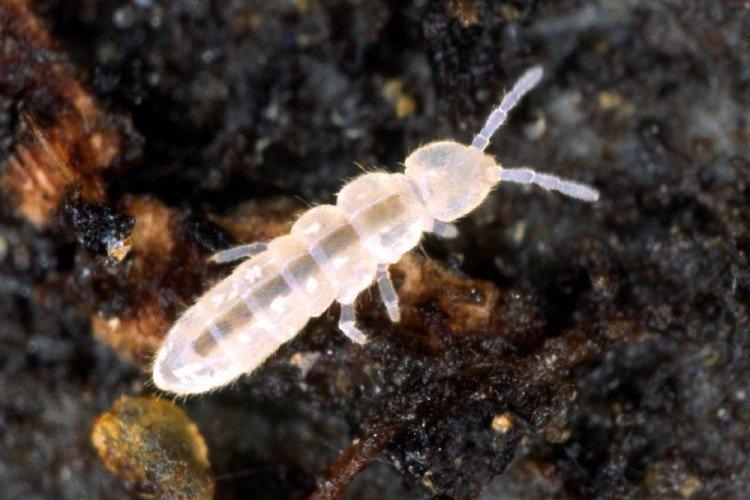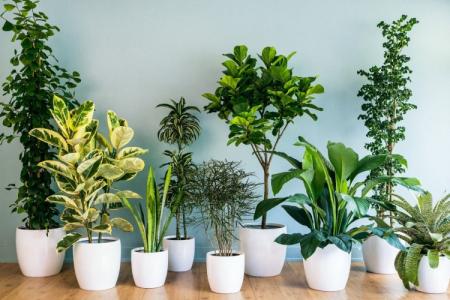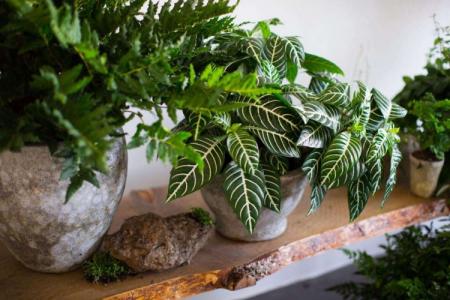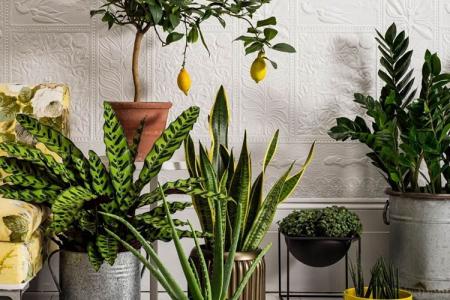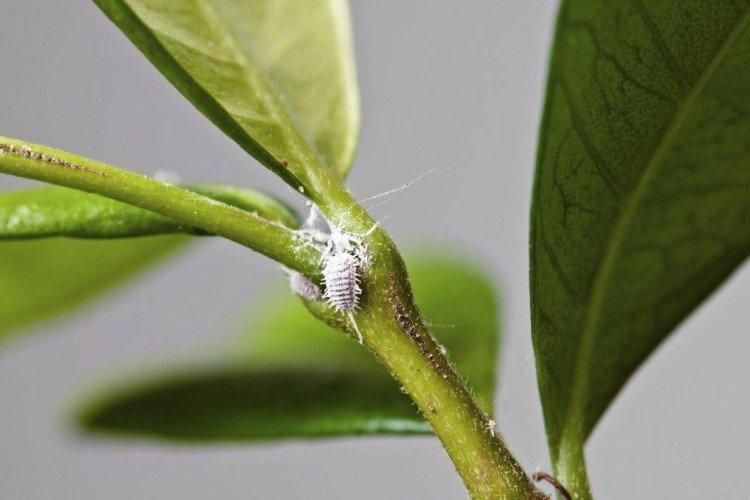
Houseplant pests are not so common, but still not a single grower is immune from them. The main thing here is to notice the problem in time and start fighting it. And in this we are ready to help you!
1. Shield
The scale insects can be seen visually as small brownish tubercles. This is their protective shell, under which pests hide. The size is about 2-4 mm. Scabbards multiply rapidly, spread throughout the plant, and gradually the flower withers, becomes covered with a fungus and dries up.
The first step is to manually remove as many parasites from the plant as possible. It is convenient to do this with cotton pads, swabs and a soft toothbrush. Then rinse the flower under a hot shower, about 40-45 degrees. A solution of grated laundry soap is suitable for spraying. And we strongly recommend that you treat the flowerpots with a professional insecticide.

2. False shields
Or coccids. They differ from ordinary scale insects only in the absence of a strong shell, which makes it easier to deal with them. Otherwise, they look like the same brownish growths, and gradually suck the juices from the shoots and leaves. The methods of control are similar - remove the maximum number of pests, hot showers, treatment with soapy water and insecticides.
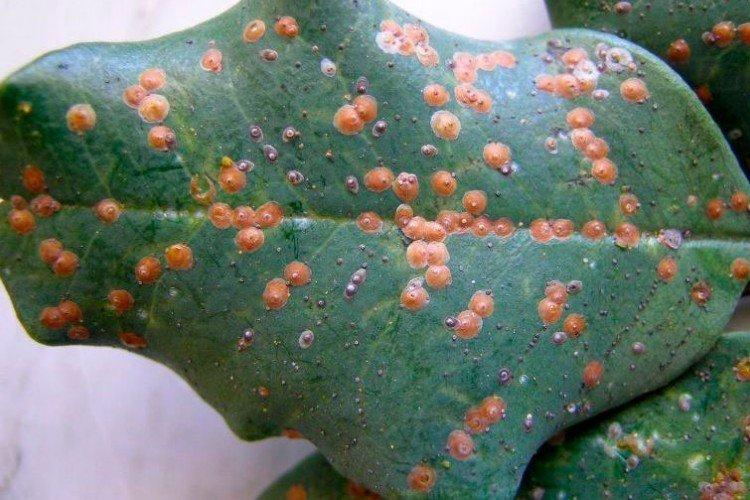
3. Spider mite
The tick itself is almost impossible to notice, but its thin silvery web is clearly visible. Gradually, the plant withers, weakens, its immunity drops, and immediately a fungus appears. It is difficult to get rid of a tick completely, so you need to act radically.
Remove the most damaged areas and rinse the plant under a warm shower with shampoo or dish soap. Then treat it with a strong infusion of chamomile, basil or pyrethrum. For spraying, dissolve a few drops of tea tree oil in water. It is better to take chemical preparations for shedding soil.
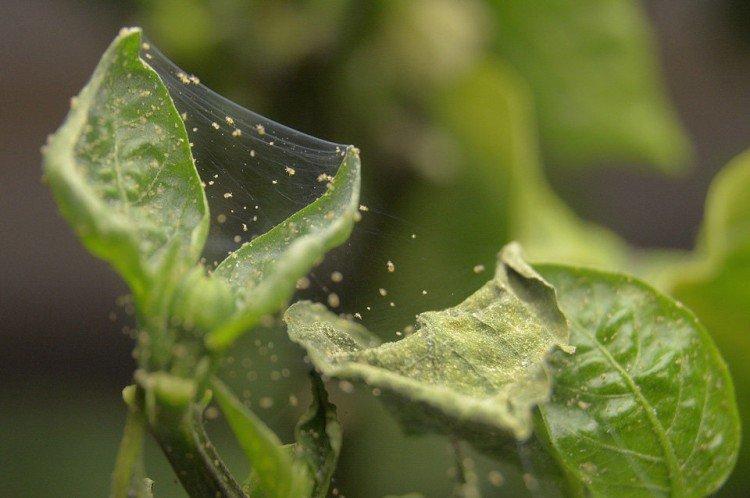
4. Aphids
In fact, this pest does not settle at home very often. Although aphids are small, it is quite easy to notice them, because the colonies cover the plant areas too densely. Dark spots remain at the bite sites, and aphids also leave a sticky reddish liquid behind them.
There is good news - a regular shower with a strong pressure is excellent for aphids. And for the prevention of enough pungent odors - citrus peels or flowering geraniums. To spray the damaged plant, use a solution of laundry soap or an infusion of 4 tablespoons. zest per liter of water.
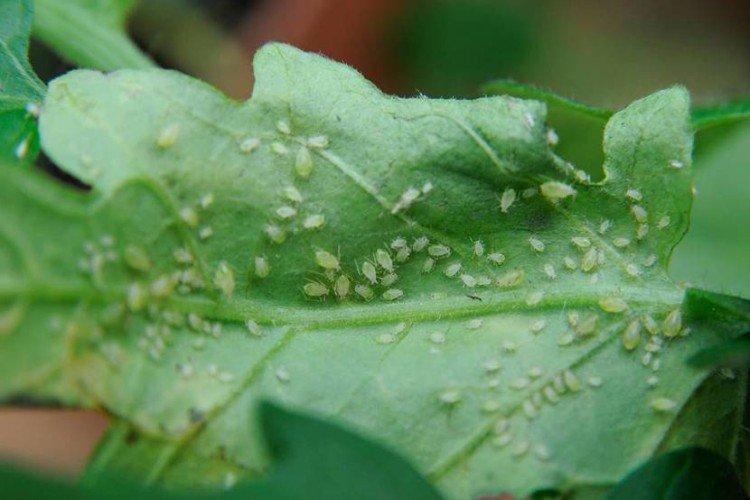
5. Mealybug
This is another indoor plant pest that is very easy to identify. Worms look like small white bugs, as if sprinkled with flour or starch. They hide on the back of the leaf plates and leave a whitish coating behind them. The worm provokes the fungus and sucks the juices from the plant.
In most cases, to combat the mealybug, it is enough to remove the parasites with a cotton pad soaked in alcohol and spray the flower with alcohol or tobacco solution several times at intervals. In more difficult cases, it is better to use insecticides. If the roots are affected, then you will have to completely remove the plant from the flowerpot, rinse it thoroughly together with the roots, treat it with drugs and transplant it into a new disinfected substrate.
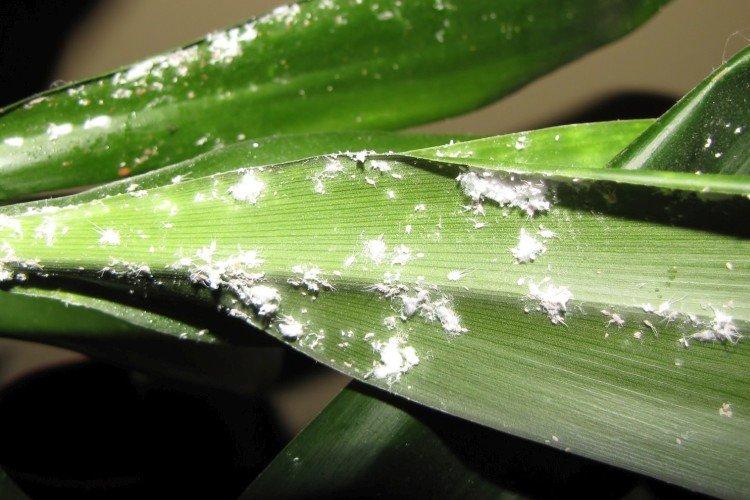
6. Nematodes
Nematodes are especially dangerous for flowering plants, ferns and ficuses. The roots hide in the soil and cause overgrowths and growths on the roots of the plant. Leaves and stems leave the same growths and lead to deformation of leaves and shoots.
The plant looks strange, develops strangely, and some areas turn pale, turn brown and die off. Basically, fighting nematodes is pointless and ineffective, so we recommend getting rid of the infected flower before the parasites spread further.
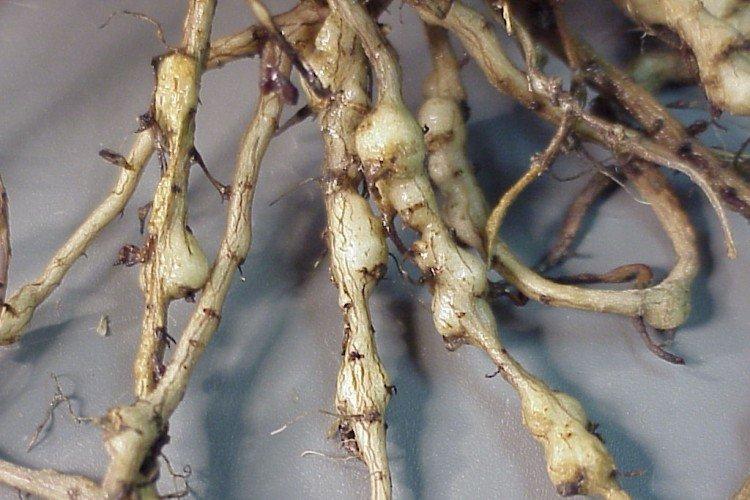
7. Thrips
Thrips are like small elongated sticks, and adults can fly. They prefer young shoots of flowering plants because they cannot break through too dense skin. The puncture sites of the sucking parasite remain yellowish dots. Gradually, you can notice the products of their vital activity.
For thrips control to make sense, you will first have to cut all flowers and buds. It is helpful to treat the leaves with a flea and tick shampoo solution for pets. You need to apply foam to the ground part of the flower and wash off after half an hour. Complex insecticides work great.
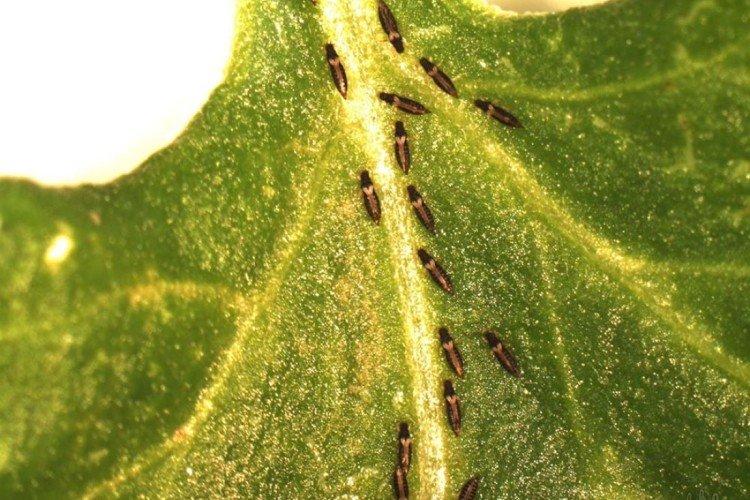
8. Armor mites
These pests are best known to orchid lovers, and outwardly they look like the usual small brown mites that jump over the stems and leaves of the plant. In reality, they are practically not dangerous for flowers, but they can tolerate the larvae of other pests, and in general there is little pleasant. For the fight, we recommend using special acaricides, because the mites are very tenacious and adapt well to everything.
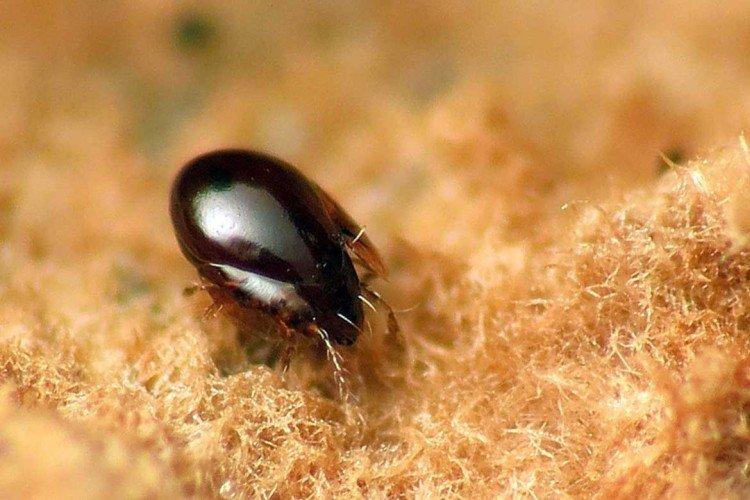
9. Whitefly
Outwardly, whiteflies resemble small moths, so they are fairly easy to spot. They leave behind sticky traces and drink juices from the plant. In addition, this sticky mass clogs the pores and prevents the flowers from breathing, which is why they die quite quickly.
Whiteflies are tenacious, so you need to deal with them systematically. First, wash the plant with soapy water or special green soap. Then - treat with insecticides, and several times at intervals. And if it doesn't help, then alternate between different drugs. But with prevention, everything is easier: enough ash, fumigators and even banal glue traps.
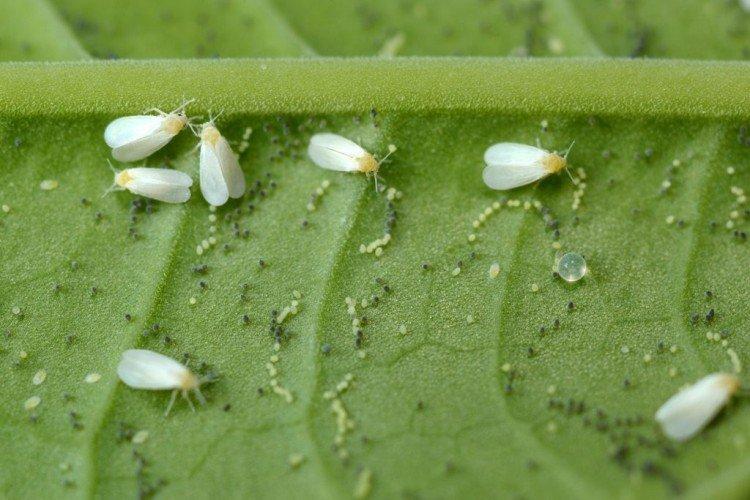
10. Sciarids
The problem with sciarids is that they are also difficult to fight with, because they start in the soil. And the advantage is that they rarely appear on indoor plants. The insects themselves resemble mosquitoes and are harmless to flowers, but they lay eggs colonies, but the larvae then stick to the roots. A sure sign of the appearance of sciaris is the causeless small black midges in the room.
It is better to completely replace the affected soil, having previously washed the roots of the plant with warm water and treated with preparations. And for prevention, the main thing is not to flood the flowers and not use organic fertilizers, such as sleeping tea or potato peels.
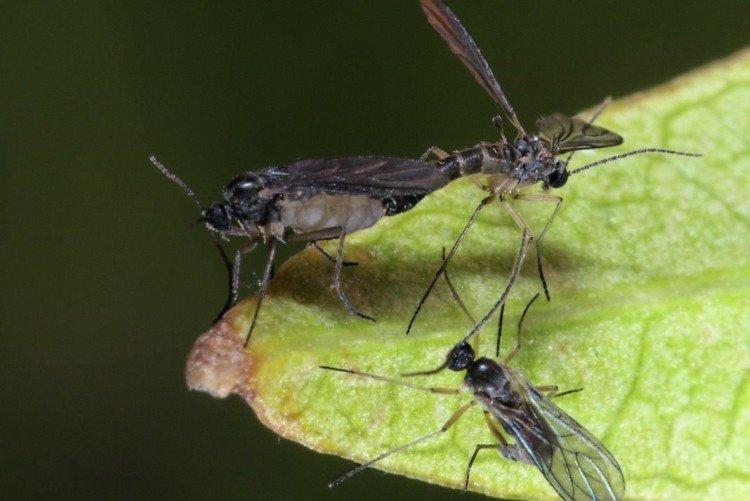
11. Root mites
This is the most dangerous group of ticks because they are almost impossible to spot. Most often, they settle on bulbous plants, gnaw the bulbs and lay eggs in them. Outwardly, these are tiny translucent insects, which are difficult to see without magnification. Indirect signs are rotten bulbs in suspicious spots.
Fighting an overgrown colony is usually pointless, because the roots are already affected. So it is important to avoid this situation. Always carefully inspect all bulbs before planting and soak suspicious ones in special acaricides.
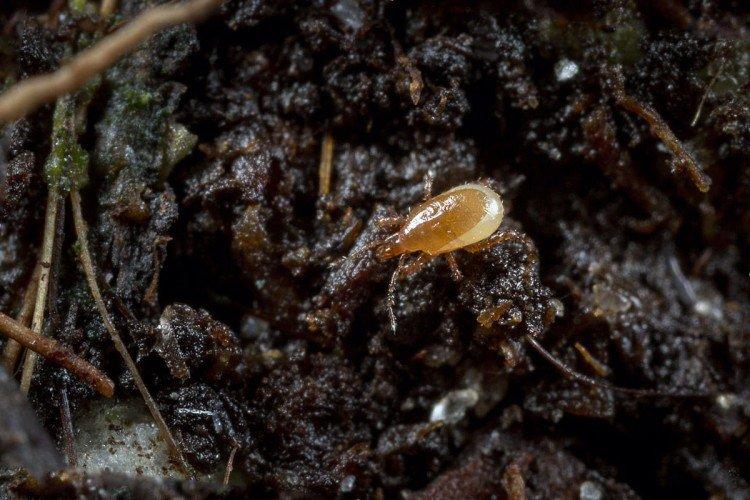
12. Soil insects
These include collembolans, suckers and springtails. These are small brown spiders, whitish fleas or gray worms that periodically appear in the soil or sump after watering. All of them are completely harmless, and this is just an indicator that the soil is rich in organic matter. Most often, such insects get into an apartment with garden soil. Usually, for control and prevention, it is enough to establish a care and watering regime.
